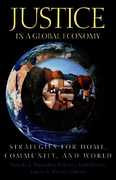Question
Question 1 Shower Power, Inc., a firm in monopolistic competition, produces shower radios. The company's economists know that it can sell no radios at $80,
Question 1
Shower Power, Inc., a firm in monopolistic competition, produces shower radios. The company's economists know that it can sell no radios at $80, and for each $10 cut in price, the quantity of radios it can sell increases by 50 a day. This relationship continues to hold until the price falls to $20. The firm's total fixed cost is $3,000 a day. Its marginal cost is constant at $20 per radio.
a)Draw the demand curve faced by the firm and its marginal revenue curve. Also draw Shower Power's marginal cost and average total cost curves.
b)What quantity of radios should Shower Power produce to maximize its profit? What price should it charge?
c)What is the firm's short-run economic profit or loss?
d)In the long run, what will happen to the demand for Shower Power's radios, the quantity of radios sold, the price charged, and the firm's economic profit?
Answer 1
a)
Demand curve:
Q = a - bP
We are told that at a price of 80, the quantity demanded becomes zero. Therefore:
0 = a - b*80
We are also told that by reducing the price by 10, the quantity demanded increases by 50.
Therefore:
50 = a - b*70
Notice that we now have a system of two equations with two unknowns (a & b). By subtracting the second equation from the first equation, we get:
-50 = a - b*80 - a + b*70
-50 = - b*10
b = 5
Replacing b in the first equation, we get:
0 = a - 5*80
a = 400
Therefore, the demand is:
Q = 400 - 5P
And the inverse demand is:
P = 80 - Q/5
According to the information we have, this equation holds in the range of P between 80 and 20. We therefore draw the demand curve in this range.
Total revenue:
Revenue = P*Q
Replacing P by the inverse demand function, we get:
Revenue = (80 - Q/5) * Q
Revenue = 80Q - (Q^2)/5
Marginal revenue:
MR = 80 - (2/5)*Q
Using this equation we can draw the marginal revenue.
If the marginal cost is 20, we know that the variable cost must be 20Q. Therefore:
Total cost = Fixed costs + Variable Costs
Total cost = 3000 + 20Q
The average total cost is the total cost divided by the quantity. Therefore:
ATC = TC/Q = 3000/Q + 20
Using this equation we can draw the average total cost.
Since the marginal cost is 20, we can graph it with a horizontal line.
We get the following graph:
b) Firms maximize their profits by producing up until the point when marginal revenue equals marginal cost. Therefore:
MR = MC
80 - (2/5)*Q = 20
(2/5)*Q = 60
Q = 150
We replace Q in the demand function to get the profit maximizing price:
P = 80 - Q/5
P = 80 - 150/5
P = 50
c) Profit = Revenue - Cost
Profit = P*Q - 3000 - 20Q
Profit = 50*150 - 3000 - 20*150 = 1500 per day
d) Since the firm is making profit, there will be entry to the market. As firms enter and compete, the demand for Shower Power radios will decrease, shifting the demand curve it faces leftwards, thus reducing the profit maximizing quantity and price. In the long run, continued entry will lead to a profit of zero.
Question 2
Two arguments used to promote trade barriers are the infant-industry argument, and the dumping argument. Explain each of these arguments and discuss their potential flaws.
Answer 2
The infant-industry argument states that incoming industries in developing countries ought to be secured against outer weight until they are experienced and have grown great economies of scale that can challenge their rivals. Some of the flaws that come with the infant-industry argument are that the companies' protection may prompt the ventures' shortcoming, making them relax and be incompetent. The protection may lead to retaliation from other countries too.
The dumping argument lies
in the position where a country lowers the export goods' prices, intending to
get unfair gains. It involves dropping prices to below what they would cost at
their country or even below the production cost and then raise the price after
destroying the other country's market. The flaws of dumping are that it becomes
very expensive to maintain and can take so many years to keep off competitors
from the business leading to subsidies adding to the exporting country's debt.
Question 3
Suppose the European economy experiences low growth rates. Write a letter to the newly appointed Chairman of the Central Bank suggesting how the Central Bank might help boost the European economy. Be sure to explain how a change in monetary policy will affect economic activity. Relate, compare and contrast your answer to the present monetary policy followed by the Chairman of European Central Bank with respect to Eurozone's present performance .
Step by Step Solution
There are 3 Steps involved in it
Step: 1

Get Instant Access to Expert-Tailored Solutions
See step-by-step solutions with expert insights and AI powered tools for academic success
Step: 2

Step: 3

Ace Your Homework with AI
Get the answers you need in no time with our AI-driven, step-by-step assistance
Get Started


